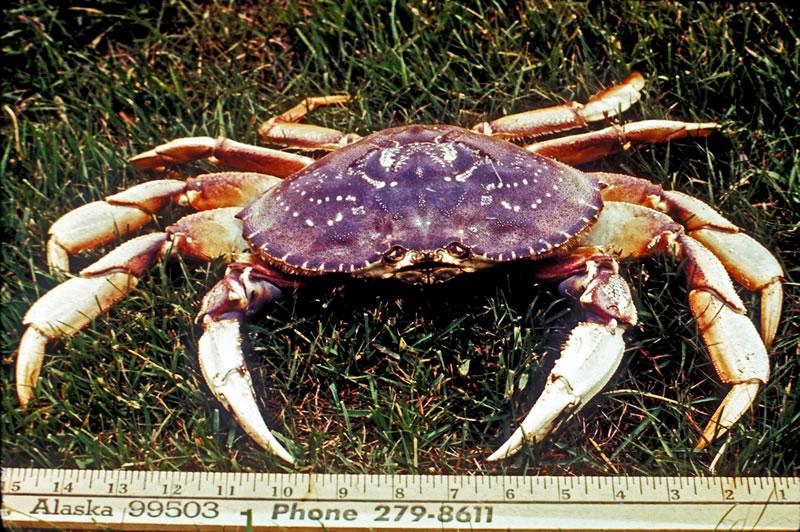Description and Range
Physical description
The shell is purple-tinged, gray or brown on the back and the tips of the claws are typically white. The Dungeness crab may reach 10 inches across the back, though 6 to 7 inches is more common.
Geographic range
This hard-shelled crustacean is fished from the Aleutian Islands to Mexico. In Puget Sound this crab is most abundant north of Seattle, in Hood Canal, and near the Pacific Coast. The Dungeness crab is frequently found in eelgrass beds and prefers sandy or muddy substrates.
Regulations
Licenses and permits
Crabbing in Puget Sound
Marine Area 4 east of the Bonilla-Tatoosh line and marine areas 5-13:
- Licenses – Recreational crabbers 15 or older must carry a current Washington fishing license. Options range from an annual shellfish/seaweed license to combination fishing licenses, valid for a single day or up to a year.
- Crab endorsement & catch cards – All sport crabbers, regardless of age, who fish for crab in Puget Sound must get a crab endorsement with their license and carry and complete catch record cards to account for all Dungeness crab they catch. They also must return their catch record cards or report online even if they did not go crabbing or catch any crab. Fishery managers rely on catch record cards to estimate recreational harvest and to set future crabbing opportunities. By completing catch record cards, fishers play a vital role in maintaining sustainable harvest opportunities.
- Reporting catch – Catch record cards must be returned to the Washington Department of Fish and Wildlife at the end of both the summer and fall/winter seasons. If you have lost your catch record card, you can still report your catch by contacting catch.reporting@dfw.wa.gov. Crabbers can report online, drop the cards off at a WDFW regional office, or mail them to:
Washington Department of Fish and Wildlife
WDFW CRC Unit,
PO Box 43142,
Olympia, WA 98504
Crabbing along the coast
Marine areas 1-3 and Marine Area 4 west of the Bonilla-Tatoosh line:
- Licenses – Recreational crabbers 15 or older must carry a current Washington fishing license. Options range from an annual shellfish/seaweed license to combination fishing licenses, valid for a single day or up to a year.
- Crab endorsement & catch cards – Crabbers fishing the coast are not required to purchase a crab endorsement or carry a catch record card.
Rules and seasons
For up-to-date information on crab areas in Washington, visit our crab seasons and areas page.
Locations
Recreational crabbing is allowed off the coast of Washington – often year-round – and in Puget Sound, where the fishery is open during specific summer and winter months. For a full breakdown, visit the crab seasons and areas page.


